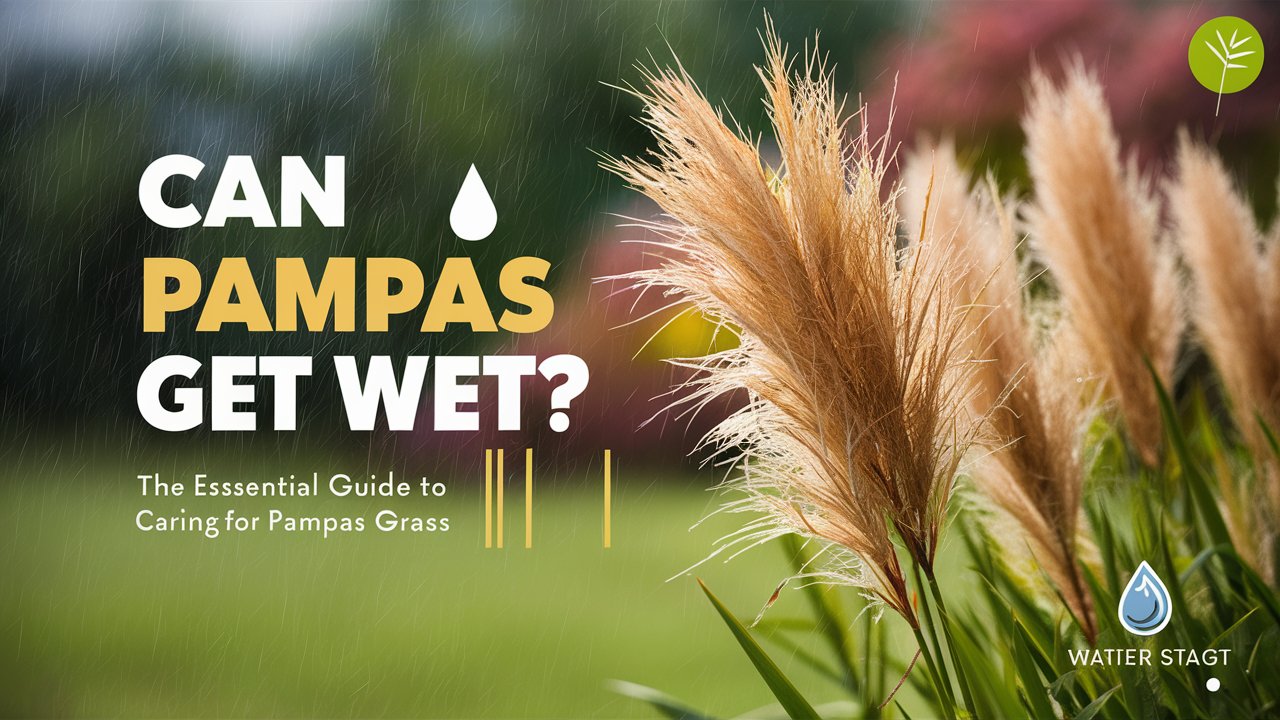Pampas grass is a stunning addition to any home or garden, with its feathery plumes adding a touch of elegance and natural beauty. However, many people wonder, “Can pampas get wet?” In this comprehensive guide, we’ll explore everything you need to know about pampas grass and water exposure, from how to care for it in different environments to tips for maintaining its beauty. Let’s dive in!
Introduction: Can Pampas Get Wet?
Can pampas get wet? This is a common question for those who love the look of pampas grass but are unsure how it fares with water exposure. Whether you have pampas grass indoors or outdoors, understanding its water tolerance is crucial for maintaining its lush appearance.
Understanding Pampas Grass
Pampas grass (Cortaderia selloana) is a tall, perennial plant native to South America. It thrives in a variety of climates and is known for its large, fluffy plumes that can be used in floral arrangements or as decorative elements in homes and gardens. While pampas grass is quite hardy, it does have specific care requirements, especially when it comes to moisture.
Can Pampas Grass Get Wet Indoors?
When used as an indoor decoration, pampas grass can add a chic, bohemian touch to any space. However, many people worry about what happens if their pampas grass gets wet.
Indoor Care Tips
- Avoid Moisture: It’s best to keep indoor pampas grass dry. Exposure to moisture can cause the plumes to lose their fluffiness and become moldy.
- Use Drying Agents: If you accidentally get your pampas grass wet, use silica gel or another drying agent to help absorb the moisture quickly.
- Display in Dry Areas: Keep pampas grass away from humid areas like bathrooms or kitchens.
Caring for Pampas Grass Outdoors
Pampas grass is more resilient when planted outdoors, but it still requires proper care to thrive.
Outdoor Care Tips
- Watering Needs: Pampas grass prefers well-drained soil. Overwatering can lead to root rot, so ensure the soil is not waterlogged.
- Rain Exposure: While pampas grass can handle rain, prolonged exposure to heavy rain may damage the plumes. Planting in areas with good air circulation can help plumes dry out more quickly.
- Seasonal Care: During wet seasons, consider trimming the grass to prevent the accumulation of moisture within the dense foliage.
Drying and Preserving Pampas Grass
If your pampas grass gets wet, or if you want to preserve it for long-term use, drying it properly is essential.
How to Dry Pampas Grass
- Shake Off Excess Water: Gently shake the pampas grass to remove as much water as possible.
- Air Dry: Place the grass in a warm, dry area with good air circulation. Avoid direct sunlight, which can cause the plumes to fade.
- Use Hairspray: Once dry, spray the plumes with a light coat of hairspray to help maintain their shape and fluffiness.
FAQs
Q: Can pampas get wet and still look good?
A: While pampas grass can handle occasional moisture, it’s best to keep it dry to maintain its appearance. If it gets wet, dry it quickly to prevent mold and loss of fluffiness.
Q: How do I protect outdoor pampas grass from rain?
A: Plant pampas grass in well-drained soil and ensure good air circulation around the plumes to help them dry quickly after rain.
Q: Can I use pampas grass in my bathroom?
A: It’s not recommended to use pampas grass in high-humidity areas like bathrooms, as moisture can cause it to become moldy and lose its aesthetic appeal.
Conclusion
Understanding whether pampas can get wet and how to care for it properly ensures that this beautiful plant remains a striking feature in your home or garden. With the right care, you can enjoy the elegance of pampas grass without worrying about water damage.


